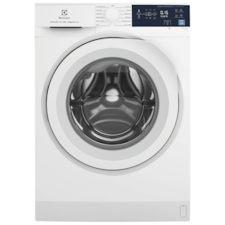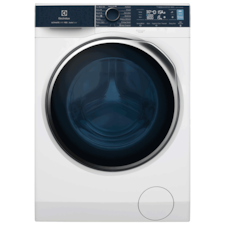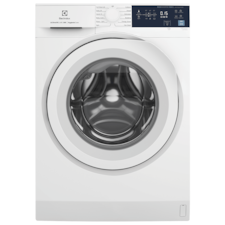Washing machines are essential parts of any home and can consume a lot of power. In this article, Electrolux shows you how you can save electricity when using your washing machine with the following tips:
- Wash full loads
- Use the right water level
- Use cold water
- Use eco modes
- Use a high spin speed
- Use quick cycles
- Choose an efficient washer
- Air dry clothes
- Wash your clothes less often
But first, let’s see how much power a washing machine actually uses.
How many watts does a washing machine use?
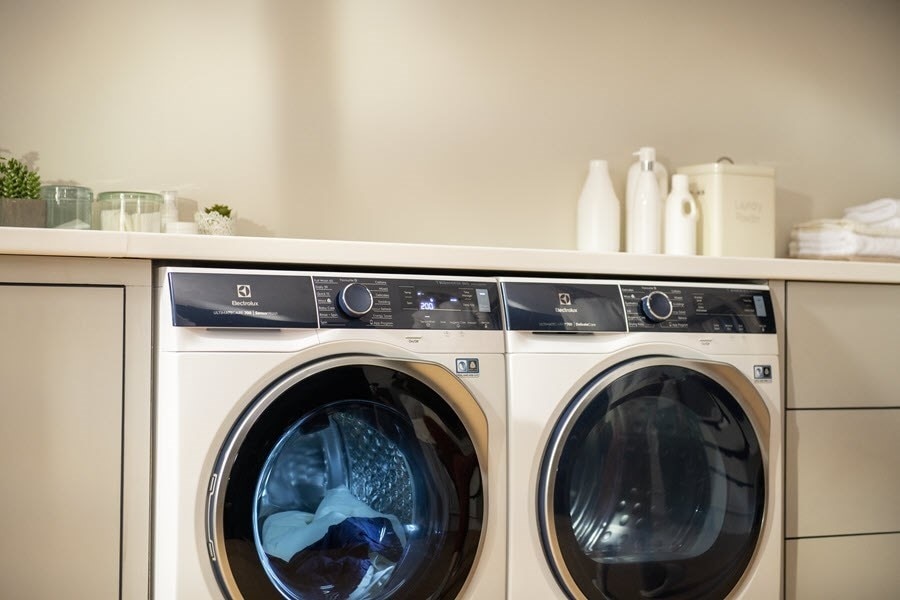
The average power consumption of a washing machine can vary depending on several factors such as the machine's size, age, efficiency rating, and cycle settings. However, in general, a washing machine typically uses between 500 to 2,500 watts per cycle, with an average of around 1,000 watts. If you run your washing machine three times a week, that can average out to about 150 kWh of electricity used in a year.
It's worth noting that most washing machines are designed to run on a 120-volt, 15-amp circuit, which means that they have a maximum power consumption of 1,800 watts. Some newer and more energy-efficient models can use as little as 150 to 500 watts per cycle.
Read our tips on how to choose a washing machine for your home.
9 tips for how to save energy when using your washing machine
1. Wash full loads
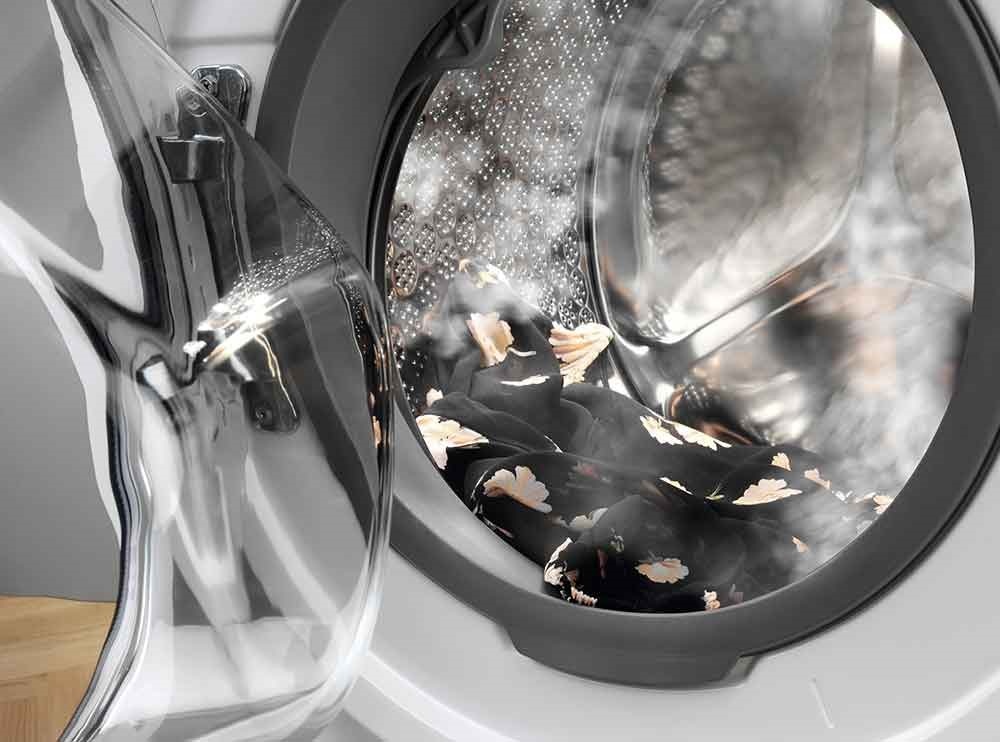
Washing full loads of laundry is more energy-efficient because the machine uses the same amount of energy to wash a full load as it does to wash a partial load. Additionally, washing more clothes at once means that you need to wash less often, which saves energy.
However, when washing a full load, make sure not to overload the machine, as this can reduce its effectiveness and increase wear and tear on the machine. Check your user manual for the appropriate load size for your chosen cycle.
2. Use the right water level
Using too much water wastes energy and using too little can reduce the effectiveness of the wash. Most modern washing machines such as Electrolux’s appliances have load sensing technology that automatically adjusts the water level based on the size of the load. If your machine doesn't have this feature, make sure to use the right water level for the amount of laundry you're washing. Typically, the water level should be just enough to cover the clothes, without any excess water.
Read more: How to use a washing machine - step-by-step guide
3. Use cold water
Heating water is one of the most energy-intensive parts of doing laundry. Washing clothes in cold water instead of hot water can reduce energy consumption by up to 90%. Additionally, using cold water is often better for preserving the color and quality of clothes. However, some stains may require hot water to remove, so it's important to check the care label on the garment before washing. If you have a stubborn stain, you may want to treat it before putting it into your washing machine for a cold wash.
4. Use Eco modes
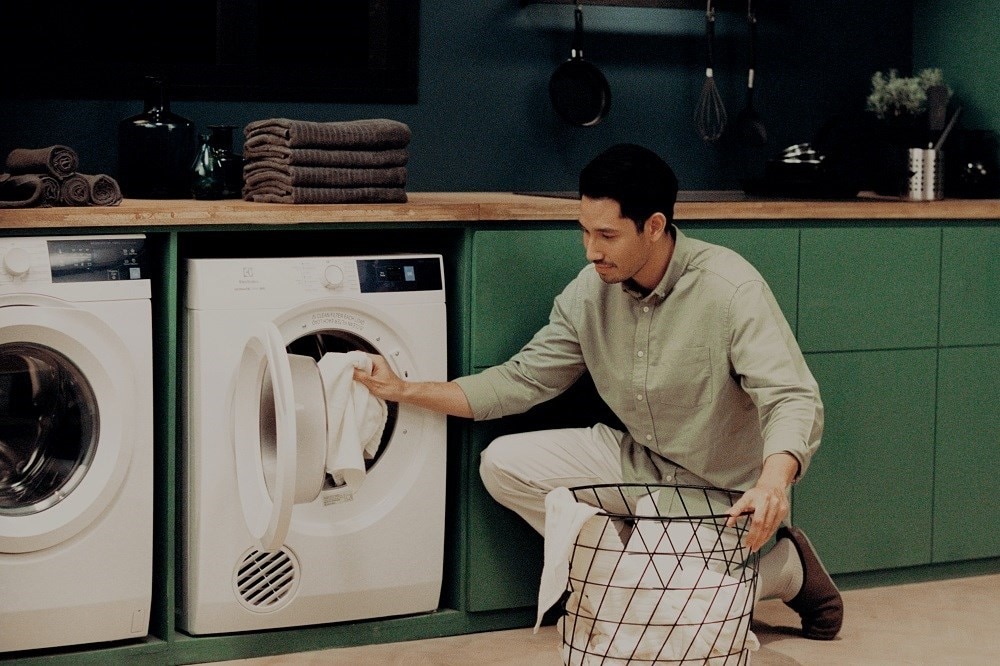
If your washer has an ‘eco mode’, make sure to take advantage of it, since these modes are designed to reduce energy consumption by optimizing the washing cycle. Eco modes typically wash clothes at a lower temperature than regular cycles. This reduces the amount of energy needed to heat the water, which can save up to 50% of the energy used in a regular cycle. They may also have shorter cycle times, which reduces the amount of time the machine is running and saves energy. This is achieved by optimizing the washing cycle and reducing unnecessary pauses or agitation.
Eco modes may also use less water than regular cycles. This is achieved by optimizing the water level based on the size of the load and reducing the number of rinse cycles needed. Finally, some eco modes use load sensing technology to determine the size of the load and adjust the washing cycle accordingly. This ensures that the machine uses only the amount of water and energy needed for the load, rather than wasting resources on a larger cycle.
This ensures that the machine uses only the amount of water and energy needed for the load, rather than wasting resources on a larger cycle.
Read more: Should you replace your washer and dryer at the same time?
5. Use a high spin speed
Using a high spin speed to extract as much water as possible from your clothes reduces the time it takes to dry them, which saves energy. Most washing machines have a high spin cycle that you can select, or you can manually adjust the spin speed based on the type of fabric you're washing. However, make sure not to use a high spin speed for delicate fabrics, since it could damage them.
6. Use quick cycles
Quick modes are designed to reduce the time it takes to complete a wash cycle. While they may not be as energy efficient as eco modes, they can still help you save electricity. Quick modes typically have shorter cycle times than regular cycles. This means that the machine is running for a shorter time, which reduces the amount of energy used. This is especially true for machines with a high spin speed, as they can extract more water from clothes, reducing the time needed for drying.
7. Choose an efficient washer
Energy-efficient washing machines are designed to use less water and electricity than traditional models. Look for models with great energy ratings such as Electrolux’s washers, which means they meet specific efficiency guidelines set by your country’s energy agency. While more energy-efficient washing machines may have a higher upfront cost, they can save you money on your energy bills in the long run.
8. Air dry clothes
Air drying clothes is the most energy-efficient way to dry them. Hang clothes outside on a clothesline or indoors on a drying rack to save energy. Additionally, air drying is often better for preserving the quality of clothes, as the heat from the dryer can damage certain fabrics. If you do need to use a dryer machine, make sure to use the appropriate heat setting for the type of fabric you're drying.
9. Wash clothes less often
Not all clothes need to be washed after every use. Items like jeans or jackets can often be worn multiple times before needing to be washed. Washing clothes less often reduces the number of loads you need to wash and saves energy. Additionally, make sure to spot clean clothes when possible to avoid unnecessary washing. When washing clothes, make sure to sort them by color and fabric type to ensure optimal cleaning and avoid the need for rewashing.
Learn more tips on how to wash different items in a washing machine:
- How to wash and dry polyester pillows properly
- How to wash a jacket in a washing machine
- How to wash shoes in the washing machine
Save more energy with Electrolux washing machines

At Electrolux, sustainability and energy efficiency are some of our core beliefs. That is why when you buy an Electrolux washing machine, you can rest assured that you’re able to save as much energy as possible. Not only do Electrolux’s washers feature excellent energy ratings, but with technologies like the EcoInverter motor, which reduces vibrations and energy consumption, you can save up to 50% of energy compared to older washer models.
Check out our range of washing machines now.
-
- HygienicCare removes 99.9% allergens and germs*.
- EcoInverter motor uses 50% less energy*.
- Set quick cycles to suit your schedule.
DISCONTINUED
-
- AutoDose for precise dosage, less wear and tear*.
- SensorWash with AI removes 49 different visible stains*.
- No more visible detergent residue with UltraMix*.
DISCONTINUED
-
- HygienicCare removes 99.9% allergens and germs*.
- EcoInverter motor uses 50% less energy*.
- Set quick cycles to suit your schedule.
DISCONTINUED

